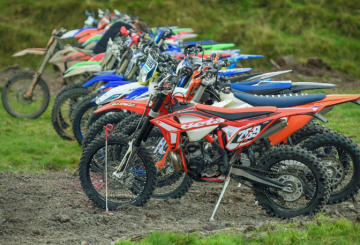Kasus flu burung pertama yang menyebar dari hewan ke manusia telah menimbulkan kekhawatiran di Selandia Baru. Para ilmuwan khawatir tentang penyebaran dan evolusi flu burung H5N1, yang telah membunuh jutaan unggas dalam empat tahun terakhir dan telah ditemukan di dua lusin negara. Virus, yang pertama kali melompat dari burung liar ke sapi di AS, sekarang diyakini telah menyebar dari sapi ke pekerja peternakan sapi perah. Ini adalah kasus pertama yang dicurigai dari jenisnya.
Sementara Organisasi Kesehatan Dunia saat ini menganggap risiko terhadap manusia rendah, ilmuwan utamanya telah menyatakan keprihatinan bahwa virus pada akhirnya dapat berkembang untuk menyebar di antara manusia. Belum ada bukti ini terjadi, tetapi dari beberapa ratus orang yang diketahui telah tertular virus dari burung, lebih dari 50% telah meninggal.
Di Selandia Baru, para pejabat telah menyiapkan rencana kontingensi nasional. Profesor Michael Baker dari Universitas Otago mengatakan bahwa influenza adalah “ancaman nomor satu” untuk pandemi global. Dia mengatakan bahwa strain H5N1 telah ada sejak lama dan telah menyebabkan salah satu peristiwa penyakit hewan terbesar yang pernah didokumentasikan.
Baker yakin bahwa Selandia Baru telah belajar banyak dari beberapa tahun terakhir tentang cara mengatasi pandemi flu manusia secara efektif. Dia mengatakan bahwa vaksin dapat dikembangkan relatif cepat; AS telah menimbun 10 juta dosis vaksin yang menargetkan strain yang mirip dengan yang ditemukan pada pekerja pertanian.
Namun, Dr Richard Webby, seorang peneliti penyakit menular yang berbasis di AS, menyuarakan kekhawatiran bahwa dunia bisa lengah lagi. Dia mengatakan bahwa tidak ada cukup sumber daya yang dimasukkan untuk mempersiapkan pandemi, yang merupakan masalah global. Dia juga mencatat bahwa lembaga kesehatan masyarakat di seluruh dunia tidak memiliki kemampuan untuk mendiagnosis virus di mana-mana.
Untuk industri susu Selandia Baru, risiko saat ini dianggap rendah. Dr Webby mengatakan bahwa infeksi AS adalah yang pertama terlihat pada sapi selama 25 tahun melacak virus.






























































